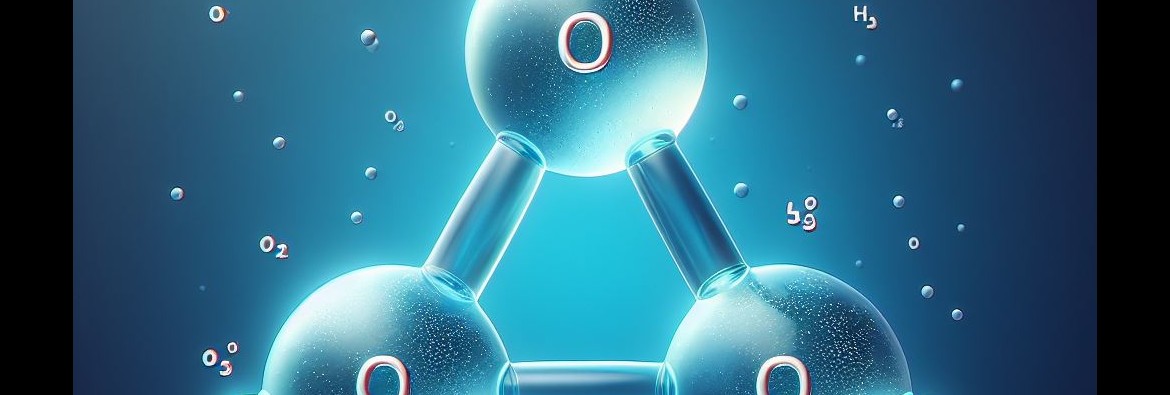
Ozone is a molecule composed of three oxygen atoms (O3). Compared with common oxygen molecules (O2), ozone molecules are unstable and easily decompose, thus releasing highly reactive free oxygen atoms in a very short period of time.
This instability makes ozone a strong oxidant because it craves redox reactions with elements in other molecules.
Free oxygen atoms:
Free oxygen atoms are the core of ozone and a key part of its ability to sterilize and oxidize organic matter. These free oxygen atoms are released when ozone molecules are broken down, and they have extremely strong oxidizing power.
Free oxygen atoms can undergo oxidation reactions with elements in other molecules such as carbon, hydrogen, nitrogen, etc., thereby destroying the chemical structure of the target molecule. This property makes ozone an excellent disinfectant and oxidant.
Sterilization and disinfection:
Ozone is widely used for killing microorganisms and disinfecting due to its oxidizing power. When ozone is exposed to microorganisms (such as bacteria, viruses, fungi), free oxygen atoms will oxidize the cell walls and membranes of the microorganisms, causing cell damage and death.
This makes ozone an important tool in water treatment, wastewater treatment and air purification, as it effectively sterilizes bacteria and improves environmental quality.
Water and air treatment:
Ozone can be used to purify water and air of microorganisms and pollutants. In water treatment, it improves drinking water quality by removing odors, colors and microorganisms from water.
In air purification, ozone can remove harmful gases, microorganisms and odors from indoor air, making indoor air fresher and healthier.
Disinfection process:
The ozone disinfection process usually includes the following steps:
Ozone generation: Ozone is generated by corona discharge, ultraviolet radiation, or chemical methods.
Introducing the target medium: The generated ozone is introduced into the water or air that needs to be treated.
Contact target: Ozone comes into contact with microorganisms or organic matter and starts the oxidation process.
Oxidation and inactivation: Free oxygen atoms oxidize microorganisms and organic matter, destroying their molecular structure, leading to cell damage and death.
Residual treatment: Finally, residual ozone needs to be completely removed to prevent harm to humans and the environment.
In summary, ozone is an oxide composed of three oxygen atoms. It has extremely strong oxidizing power and can be used in a variety of applications such as sterilization, disinfection, odor removal, and water and air purification. It achieves these goals by releasing free oxygen atoms that are able to oxidize other molecules and destroy their structures, making it an environmentally friendly and highly efficient disinfection method.http://www.ozonewish.com#Ozone#ozonewish#Ozone layer#BINGWISH#AFFORDANCEWISH#ozonewish.com#ozonewish #Ozone depletion#Ozone hole#Ozone generator#Ozone therapy#Ground-level ozone#Ozone concentration#Ozone production#Ozone pollution#Ozone gas#Ozone molecule#Ozone safety guidelines#Ozone monitoring# Ozone exposure limits#Ozone measurement units (ppm - parts per million)# Ozone-forming pollutants#Ozone in the atmosphere#Ozone detection#Ozone control measures#Air purifier#Air cleaner#HEPA filter#Activated carbon filter#UV-C light#Ionizer/ionization#Filtration system#Particulate matter (PM)#Allergens#Indoor air quality (IAQ)#CADR (Clean Air Delivery Rate)#Ozone generator#VOCs (Volatile Organic Compounds)#Dust removal#Asthma triggers#Bacteria and viruses removal#Pollutant elimination#Air sanitization#Room air purifier#Portable air purifier#BreatheTheDifference #LiveTheLife #ShenzhenWishIndustryCoLtd #AirPurifierSterilizer #HealthyLiving #HomeDecor #LifestyleInvestment